In most corners of the world, Crail would be the centerpiece of the local golfing scene. But, with St. Andrews, Kingsbarns, and a few dozen other courses to compete with along the adjacent coastline, Crail plays the honorable role of an authentic, accessible, affordable, affable alternative for the alliterative.
I was able to enjoy The Crail Golfing Society’s pair of seaside, 18-hole courses in the magnanimous company of my host and GCA brethren Mark Pearce and the jovial Martin Glynn Bonnar in pristine weather conditions (70 F, very slight breeze, sunny) on the last day of May. Such is the making of golf’s finest occasions. I actually met Mark the night before when I happened to finish my round on the St. Andrews Old Course at the exact time he suggested we meet by the R & A clubhouse, though I never received his email. That was but one of many fortuitous blessings that permeated my trip to Scotland.
Our triumvirate actually played the Craighead Links (Gil Hanse design, 1998,stretches to 6728 yards in total length, par 72) in the morning, enjoyed awarding fish and chips in Anstruthers for lunch, and then returned for an afternoon round on the Balcomie Links (mainly an Old Tom Morris design, 1890’s, 5861 yards, par 69), but I’ll present the courses in alphabetical order while overusing parenthetical text.
Enjoy!
FYI: My other pictorial threads from this trip can be viewed at the following links:
Royal Dornoch
http://golfclubatlas.com/forum/index.php/topic,40107.0/Brora
http://golfclubatlas.com/forum/index.php/topic,40120.0/ Golspie
http://golfclubatlas.com/forum/index.php/topic,40126.0/ The Castle Course
http://golfclubatlas.com/forum/index.php/topic,40204.0/ Murcar
http://golfclubatlas.com/forum/index.php/topic,40281.0/Crail: Craigshead & Balcombie
http://golfclubatlas.com/forum/index.php/topic,40325.0/Lundin Links
http://golfclubatlas.com/forum/index.php/topic,40387.0/Muirfield
http://golfclubatlas.com/forum/index.php/topic,40439.0/Cruden Bay
http://golfclubatlas.com/forum/index.php/topic,40565.0/Gleneagles - Kings Course
http://golfclubatlas.com/forum/index.php/topic,40675.0/St. Andrews - Old Course
http://golfclubatlas.com/forum/index.php/topic,40696.0/Gullane #1 & #2
http://golfclubatlas.com/forum/index.php/topic,41085.0/Panmure
http://golfclubatlas.com/forum/index.php/topic,41122.0/Gleneagles - Queens Course
http://golfclubatlas.com/forum/index.php/topic,41152.0/Kingsbarns
http://golfclubatlas.com/forum/index.php/topic,41184.0/Royal Aberdeen - Balgownie Links
http://golfclubatlas.com/forum/index.php/topic,41498.0/Carnoustie – Championship Course
http://golfclubatlas.com/forum/index.php/topic,41834.0/North Berwick - West Links
http://golfclubatlas.com/forum/index.php/topic,42104.0/*not featured: Nairn, Eden, New, Castle Stuart (tour)
This hastily fashioned (and erroneously labeled in a few places) map might help orient viewers to what they’re seeing in the following photos.
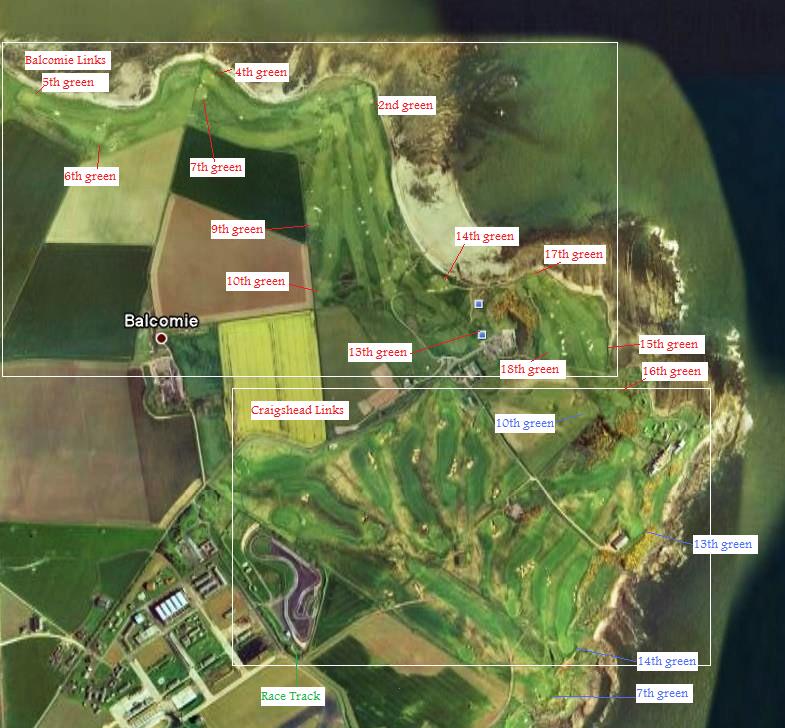
After the opening hole takes players down from the lofty perch of the clubhouse, the 2nd (par 5 , 493 yards)plays between the beach and a series of inland hillocks to a peninsula green site.
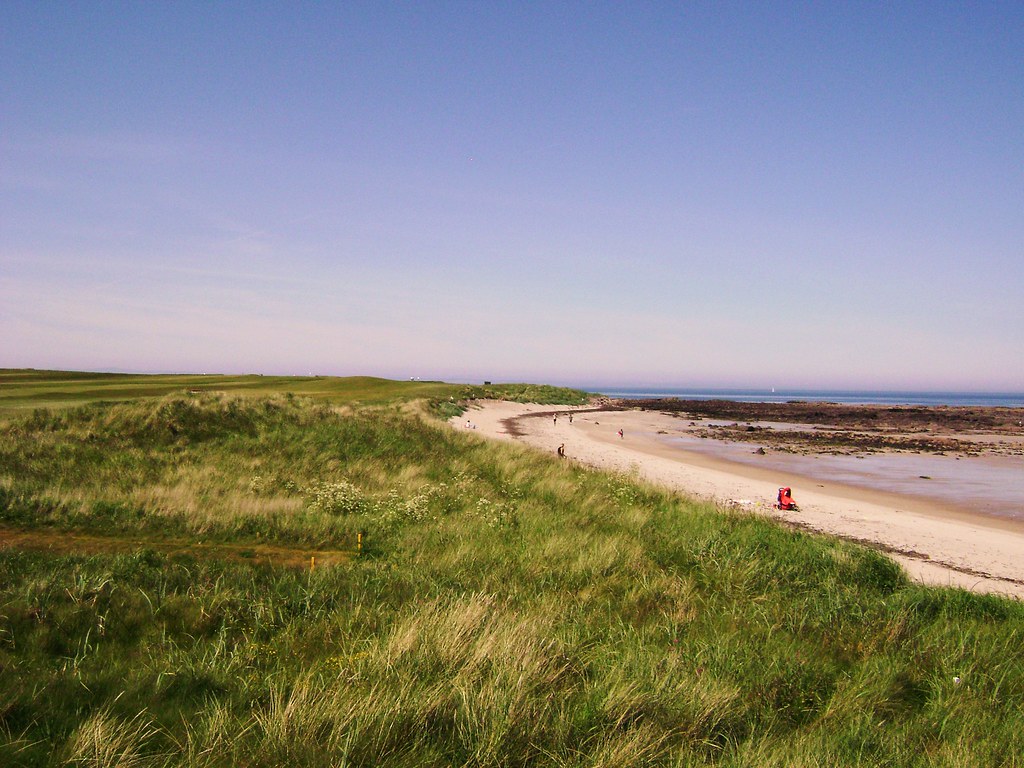
A look back at the 4th hole (par 4, 354 yards from the medal tees/ 315 yards for visitors), doglegging to starboard around the shoreline. An easy par if one does not get greedy, especially with helping winds, but trouble lurks as the beach is strictly out-of-bounds at Crail.

The 5th hole (par 4, 447 yards) also doglegs right around an ocean cove, but the angle is less acute. As such, the tee shot is reminiscent of the closing hole at Dye’s TPC Sawgrass (Stadium Course), though it turns in the opposite direction and there are no trees guarding the bailout area left. Kingsbarns golf links is just up the coast from the 5th green. The 6th (par 3, 188 yards) hole is seen coming back from elevated teeing grounds (scroll right to see the green’s front edge).
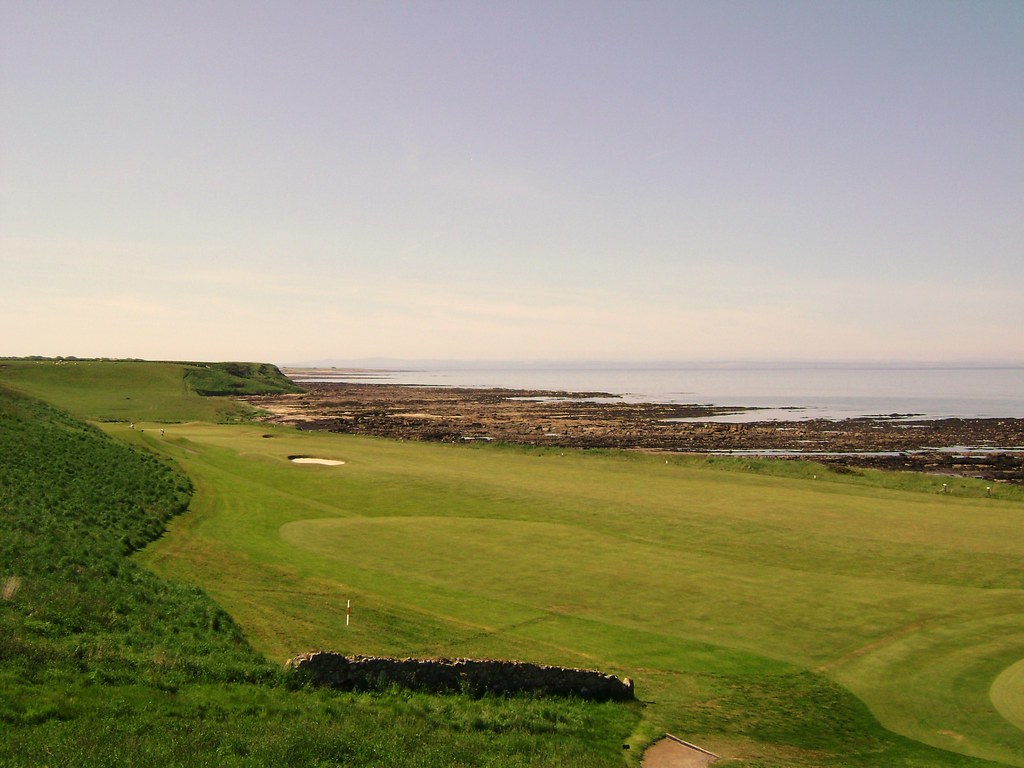
-->Panning right, one sees the 6th green, and the 5th tees near the right border of the frame.
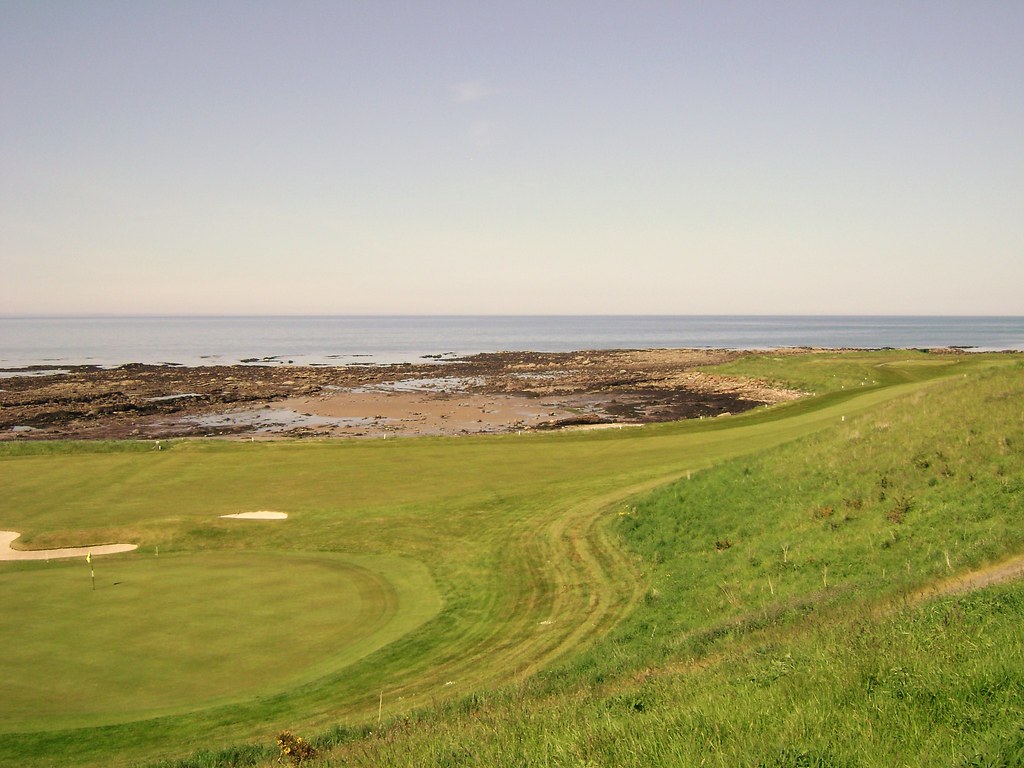
-->And a bit further still to the right one sees the 7th (par 4, 364 yards) fairway playing along the boundary wall before spilling down to the lower plateau.

This view shows the 7th green on the right with the 4th green left. A manmade berm (2-3 feet high and under my feet as I took this photo) runs across the front of the 7th green at a 45-degree angle from short right to long left – a simple but vexing feature.
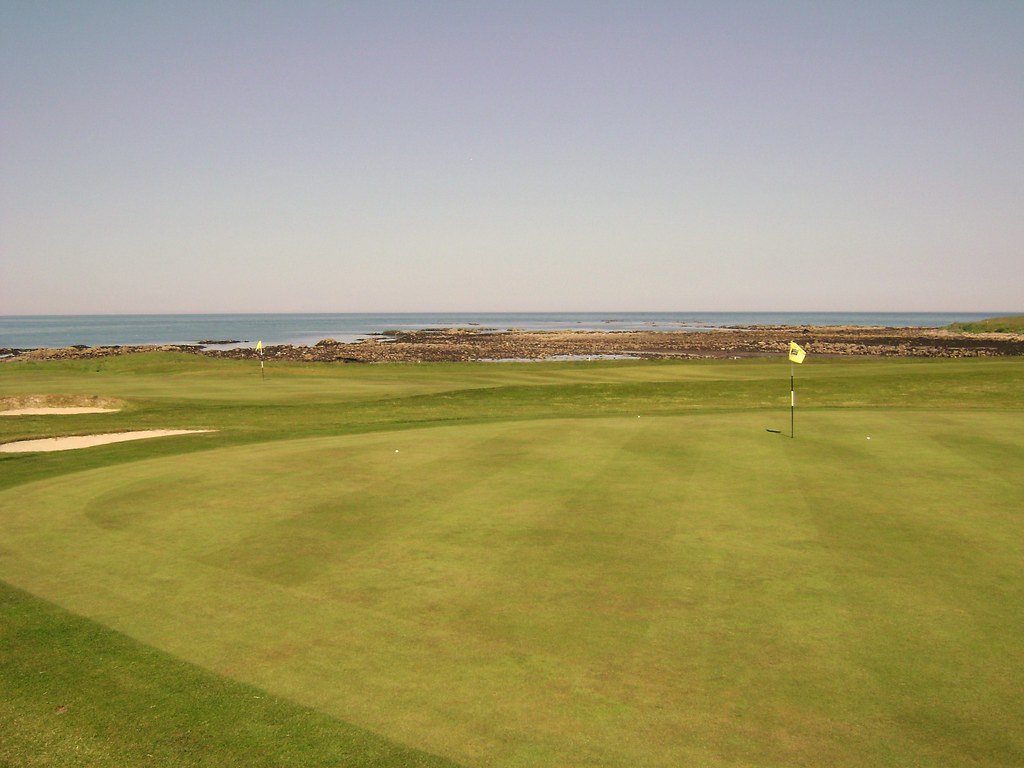
The 9th hole (par 4, 306 yards from medal tees, 250 yards for visitors)plays slightly uphill , with the centerline angled towards the boundary wall right and long of the green. The 10th hole (par 4, 336 yards) is seen beyond, also playing up to the stony partition.

Landing short and left is no bargain either. The sand at Crail was not so light and fluffy as at most of the nearby links, making it very tough to play high and soft recovery shots with my 50-degree wedge… I suffered. On the horizon behind me, the left-most building by the flagpoles is the new clubhouse (still under construction). The 1st tee is just below and right of the new clubhouse playing to the flag right of the smaller building on the lower plateau. Did you follow all of that?
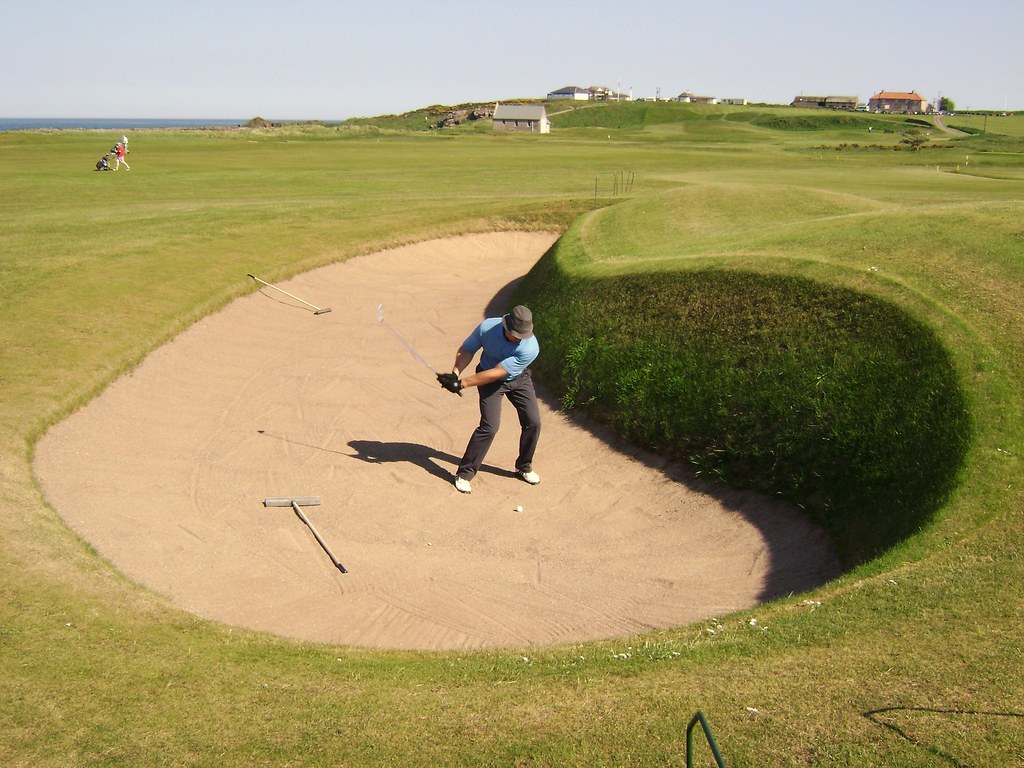
The 13th hole (par 3, 224 yards from the tips) plays up onto the inland plateau adjacent to the 1st tee. The flag is red and visible at the left center of the photo near the left edge of the coupled, gray-roofed buildings. The last ~60 yards of the approach are on the upper level.

From the 14thtee (par 3, 147 yards, steeply downhill), one sees the large greenside bunker with planked flanks (I believe the green was protected by two smaller, boardless bunkers until recently). The front half of the green (which is 35 yards deep) is heavily tilted towards the tee. On the left, the first fairway leads to a green left of the shack. The 2nd tee is just right of the 1st green, leading players to the distant corner of turf in the top center of the frame. The trail leading to the right of this picture passes a cave that is purportedly the inspiration for “MacDuff’s Cave” in the novels “Golf In The Kingdom” and “In Search of Burningbush.”

My final offering from the Balcomie Links is from the course’s southernmost edge. The 15th hole (par 4, 264 yards) plays towards the camera along the shoreline. Just left of the 15th green , the 16th tees (par 3 162 yards, up hill) play to the green seen amongst the strands of gorse near the right side of the image. The 17th hole (par 4, 462 yards, 417 for visitors) plays straight away to a green just short and left of the small oceanside hillock. The 18th (par 3, 205 yards) plays back towards the rock wall on the left, bordering the Craighead Course. And, of course, the fledging clubhouse sits on the promontory.
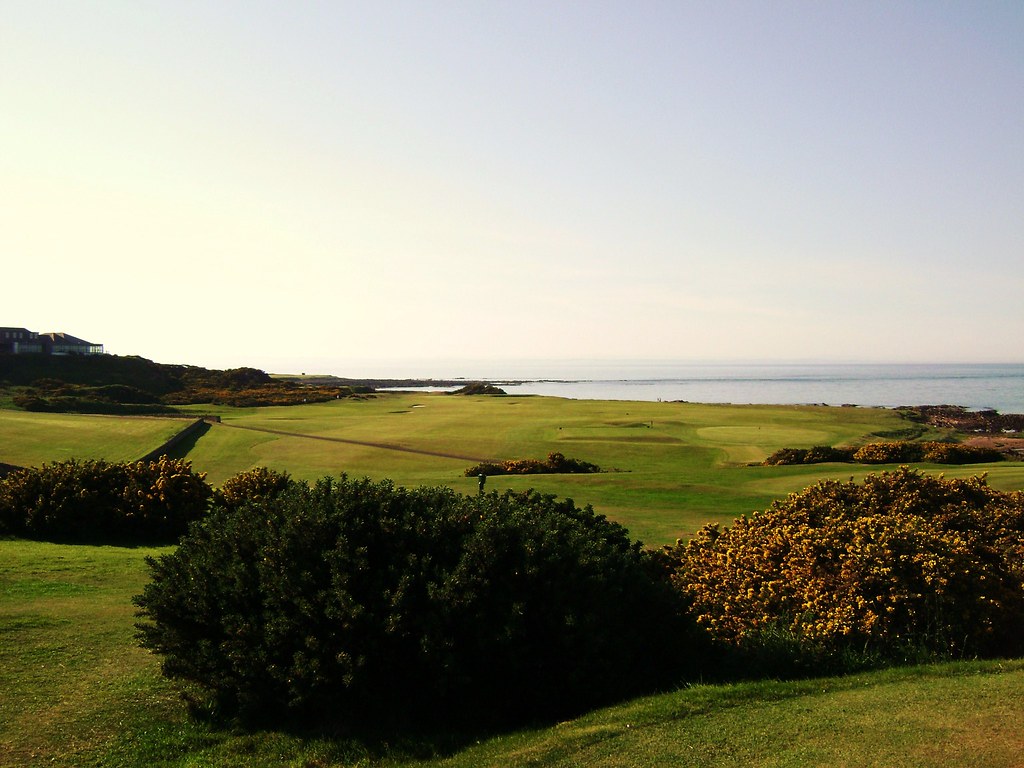
The Balcomie provides a prime example of an architect adapting to what the land offers rather than conforming to convention. How many courses do you know that finish with a par sequence of 3,3,4,3,4,3?
On to the Craighead Course…
This relatively new addition to the golfing scene in Fife plays much tougher than its older sibling due to its greater length and some tricky shaping in and around the greens. Though it also wanders up, down, and around sweeping terrain above the sea and incorporates a number of stone walls into the strategy of several holes, the fairways due not feature the “linksy ripples” or whimsical charm of the Balcomie. The Craighead course is a bit more business-like and serves as a worthy companion to its elder. It also “enjoys” a much greater proximity to the motor speedway…
The 7th hole (par 3 198 yards) plays directly to the Forth of Firth. This view is from left of the green. That nasty little pot bunker has 3 sisters guarding the right and rear of the green. The turf around the greens is kept a little shaggier on the Craighead, limiting the chances of success with low-running recovery shots.
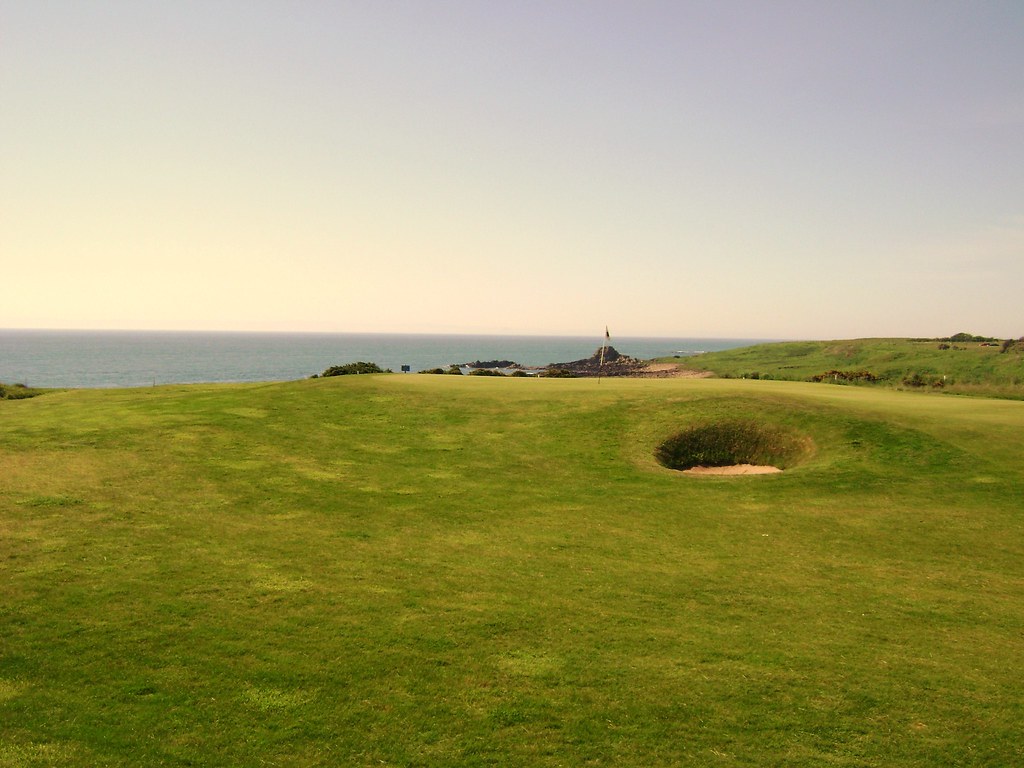
Looking back toward the 10th (par 4, 303 yards) green and 11th tee from short of the the 11th fairway (16th green from the Balcombie Links seen beyond the wall).
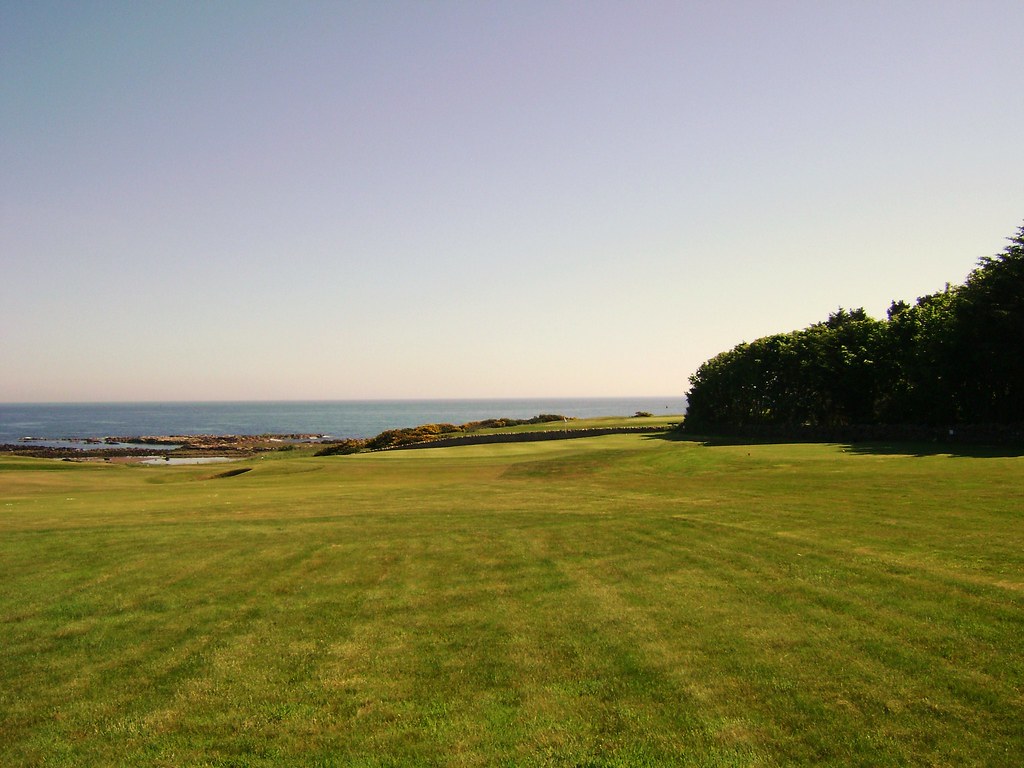
Another seaside par 3 (how many can one golf club boast?!), the 13th is 160 yards in length. Playing over the pot bunker, one can utilize the right-to-left slope of the green and avoid the stone wall found port side. Note how the earthworks soften the visual impact of the barn.
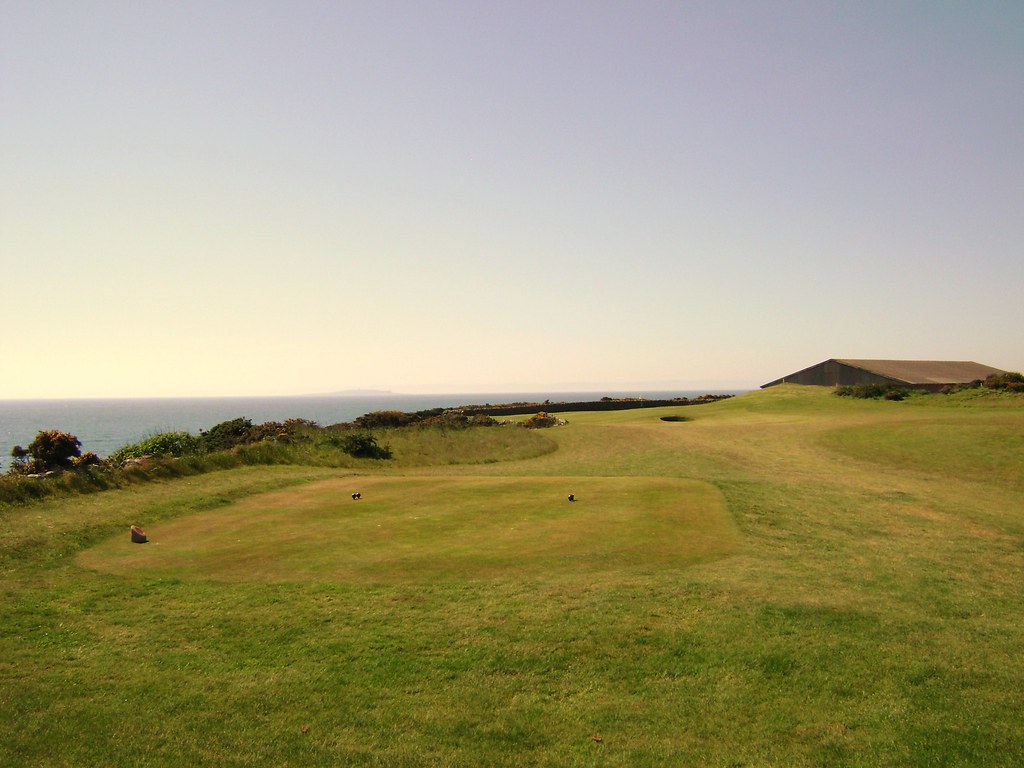
A stunning test of nerves, the 14th (par 4, 422 yards) hugs the natural line of the shore. The fairway feeds left, but the green approach is more open from the right.
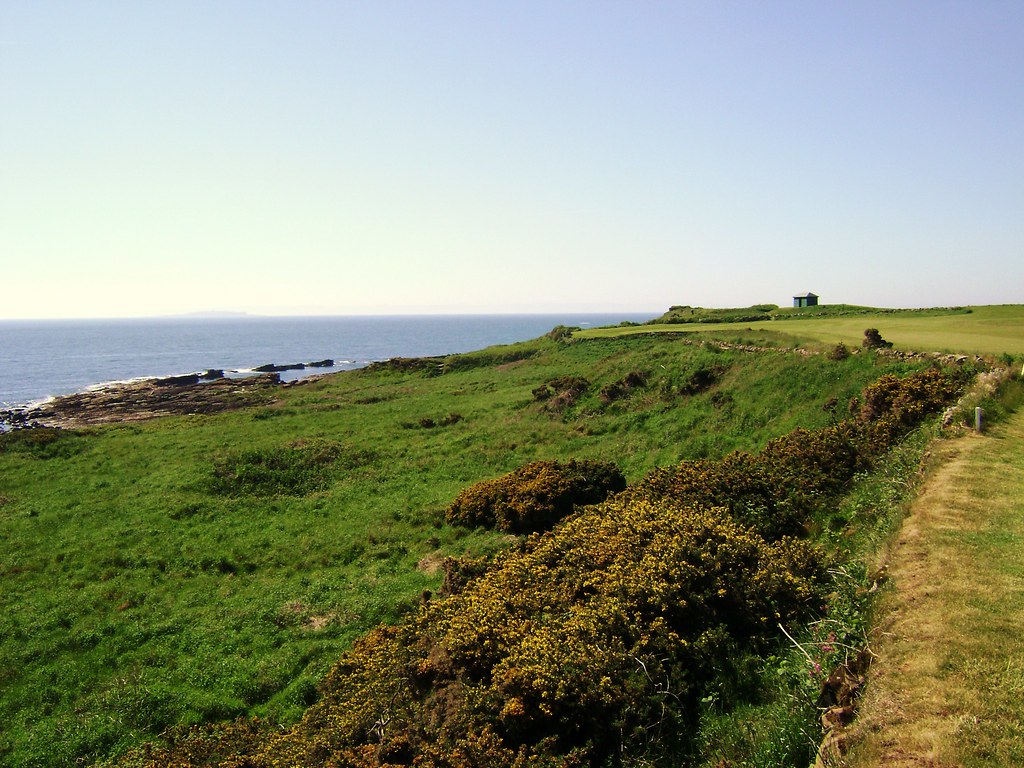
A look back at the 14th green reveals the folly of flirting with the left-hand boundary along with the potential perils associated with bailing out towards the rocky hedge behind the green.
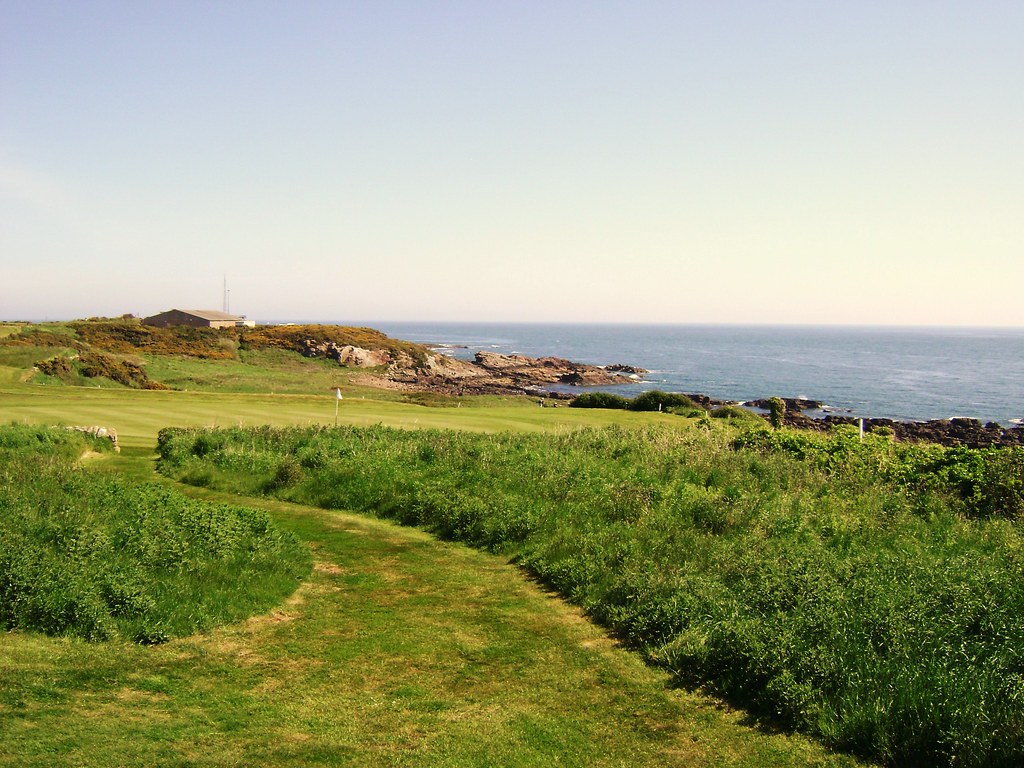
Thoughts? Comments? Let’s discuss!
-Kyle